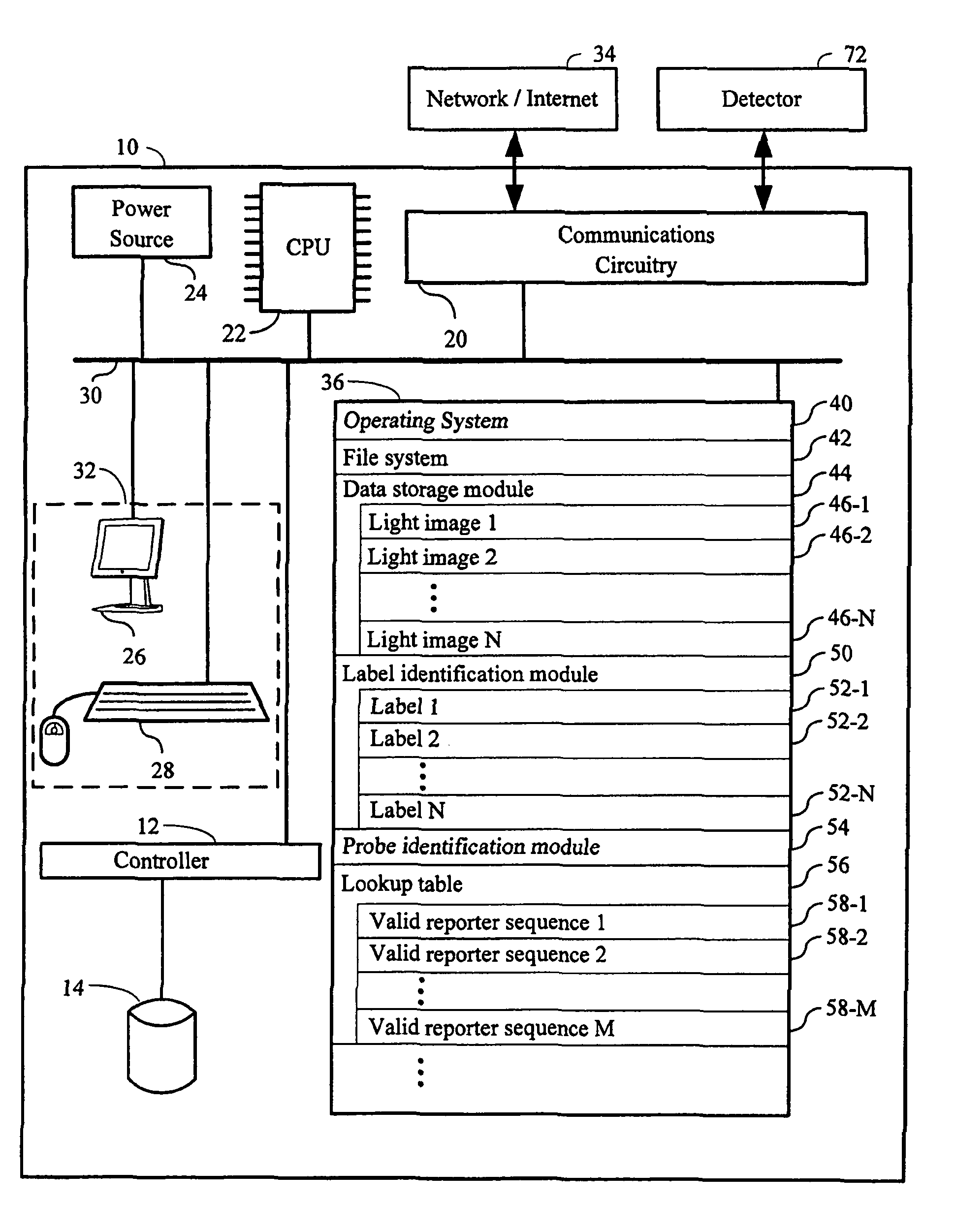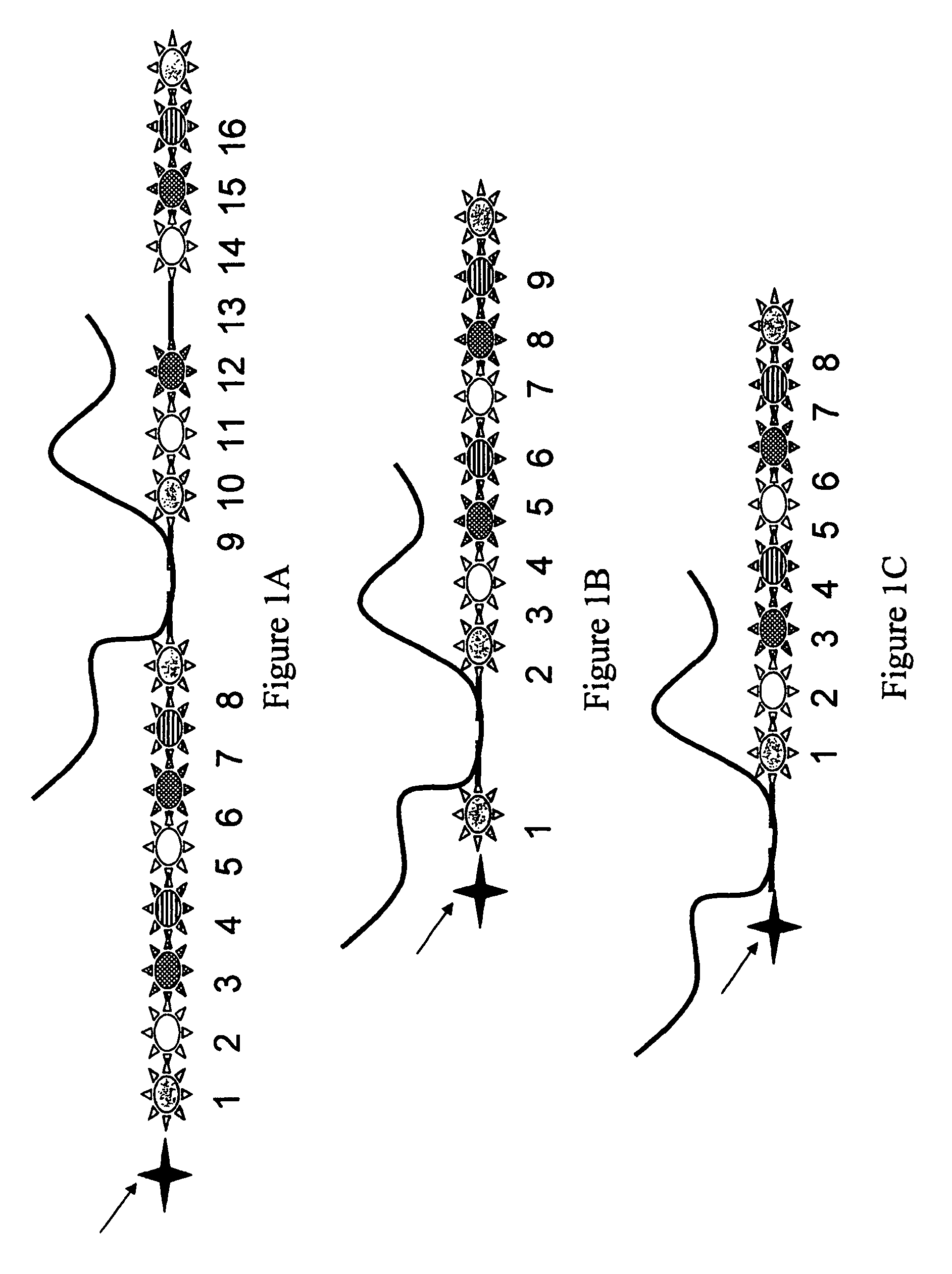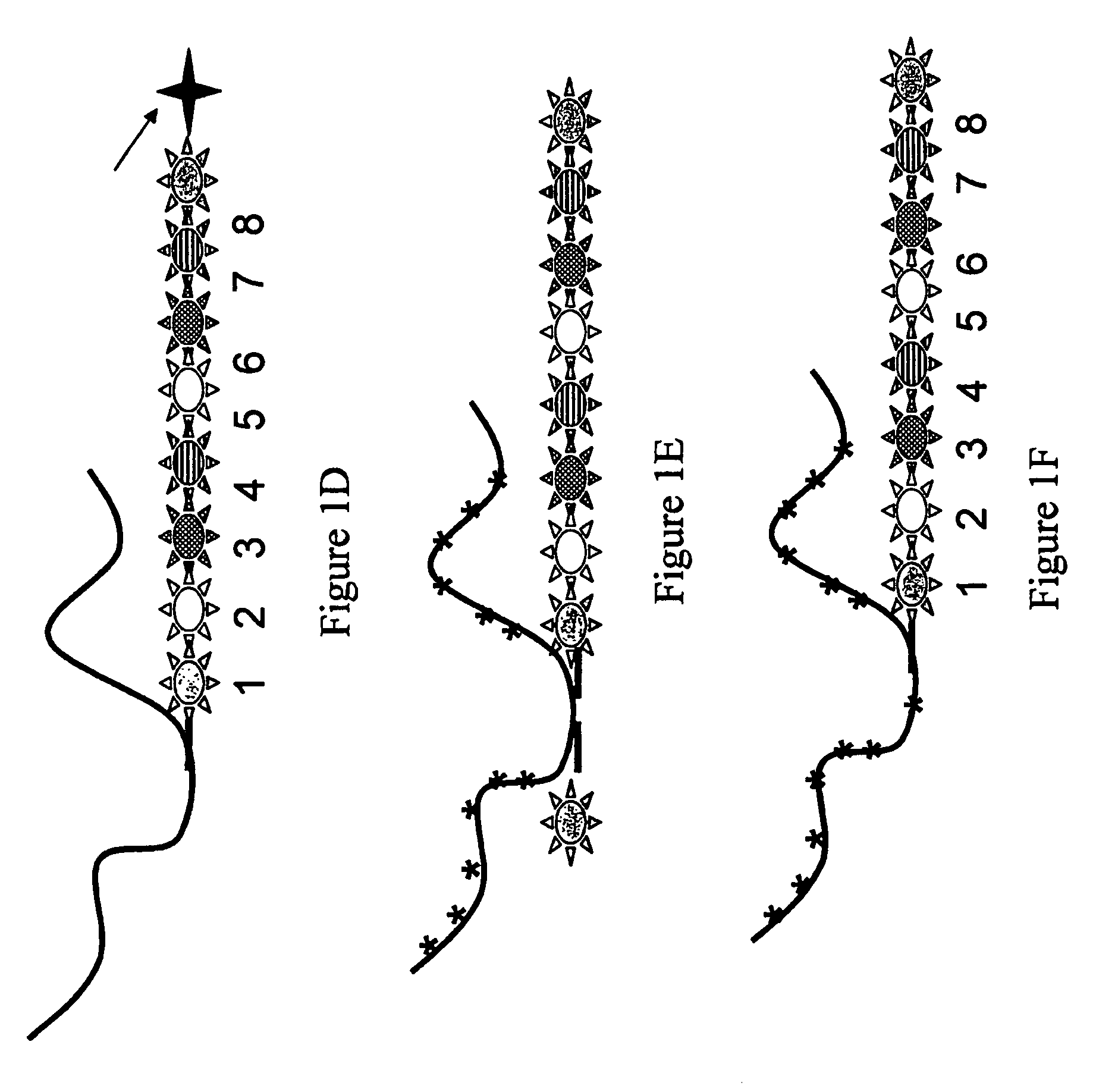Systems and methods for analyzing nanoreporters
a reporter and nanotechnology, applied in the field of coded and labeled reporter molecules, can solve the problems of insufficient supply of biological samples, method still requires significant amounts of biological samples, and the kinetics of hybridization on the surface of a microarray are less efficient than hybridization
- Summary
- Abstract
- Description
- Claims
- Application Information
AI Technical Summary
Benefits of technology
Problems solved by technology
Method used
Image
Examples
example 1
6.1 Example 1
Selective Immobilization or Extended DNA
[0333]A double stranded RNA-DNA hybrid 7.2 Kb in length is functionalized at one terminus with biotin. At the other terminus, the DNA comprises a single stranded sequence of 15 bases repeated 4 times (5′-GTC TAT CAT CAC AGC GTC TAT CAT CAC AGC GTC TAT CAT CAC AGC GTC TAT CAT CAC AGC-3′; SEQ ID NO:2). Thus, the DNA comprises four binding sites at one terminus for selective immobilization. The hybrid also has four regions with Cy3 fluorophores incorporated into the RNA.
[0334]A small sample of the DNA (3 μL, 0.01 fmol / μL in 1×TAE, or 40 mM Tris acetate, 1 mM EDTA, pH 8.0) is transferred into a microfluidic device comprising a channel molded into polydimethylsiloxane that is passively adhered to a streptavadin coated coverslip (Accelr8, TB0200). The channel dimensions are 50 μm×1 mm×10 mm. See FIG. 15A. The sample is contacted with the coverslip at room temperature for 15 minutes allowing the DNA to selectively bind the streptavadin s...
example 2
6.2 Example 2
Patch / Flap Nanoreporter Manufacturing Protocol
[0400]This example demonstrates another way of making a nanoreporter which consists of a single stranded linear M13mp18 viral DNA, oligonucleotide patch units and long flaps. Nanoreporter label units were successfully generated using methods substantially as described in this example. Pre-phosphorylated patch units and flaps are added together with the M13mp18 DNA vector and ligated together. After the ligation of the flaps to the patch units which are ligated to the M13mp18 DNA, the BamH1 enzyme is introduced to linearize the vector. Prepare a batch of nanoreporters starting with 5 μg of M13mp18 as a scaffold. The hybridization may be scaled up accordingly to the desired amount. This process will take about 1-2 days to complete.
[0401]Materials:
[0402]
QtyItemVendor20250 ug / ul M13mp18 viral ssDNANew EnglandBiolabs27ul0.74 pmol / ul Oligonucleotide Patch Unit MixIDT8ulLong Flap Oligonucleotide A 100 pmol / ulIDT8ulLong Flap Oligonu...
example 3
6.3 Example 3
Protocol for Production of RNA Nanoreporters
[0418]Nanoreporters were generated and successfully employed to detect target molecules using methods substantially as described in this example. An example of target detection using such this method is shown in FIG. 6.
[0419]Scaffold Production. Single-stranded circular M13mp18 DNA (USB) was annealed to a 5-fold molar excess of an oligonucleotide complementary to the Bam HI recognition site (Bam Cutter oligo) and cut with Bam HI restriction enzyme to yield a linear single-stranded DNA backbone. An oligonucleotide complementary to the Barn Cutter oligonucleotide (anti-Bam oligonucleotide) was subsequently added in 50-fold excess to sequester free Bam Cutter oligonucleotide and thus prevent recircularization of the M13 during later steps. The linear M13 molecule serves as a scaffold onto which RNA patches, or RNA segments, with incorporated fluorophores can be annealed.
[0420]PCR to form double-stranded positions on the M13 scaff...
PUM
 Login to View More
Login to View More Abstract
Description
Claims
Application Information
 Login to View More
Login to View More - R&D
- Intellectual Property
- Life Sciences
- Materials
- Tech Scout
- Unparalleled Data Quality
- Higher Quality Content
- 60% Fewer Hallucinations
Browse by: Latest US Patents, China's latest patents, Technical Efficacy Thesaurus, Application Domain, Technology Topic, Popular Technical Reports.
© 2025 PatSnap. All rights reserved.Legal|Privacy policy|Modern Slavery Act Transparency Statement|Sitemap|About US| Contact US: help@patsnap.com



